Note: This website was automatically translated, so some terms or nuances may not be completely accurate.
The Mazda Museum: Telling the Story of "Relentless Challenge"

Headquartered in Hiroshima, Mazda operates the Mazda Museum on the same grounds. In this city devastated by the atomic bomb, Mazda resumed production of three-wheeled trucks a mere four months later. This article explores the museum, which conveys the company's indomitable spirit, relentless pursuit of challenge, and passion for automobile manufacturing through storytelling.
Reporting and Text: Maria Takachi (PR Consulting Dentsu Inc.)
Established in 1994, the Mazda Museum underwent its first renovation in 2005 to mark the company's 85th anniversary. A second renovation and reopening was planned for January 2020, coinciding with the 100th anniversary, but was postponed due to the COVID-19 pandemic and finally opened to the public in May 2022. The museum is located within the vast headquarters grounds, an area equivalent to dozens of Mazda Stadiums. It is a two-story building with a total floor area of 3,645 square meters. Part of the headquarters factory is adjacent, and the museum's exhibition area includes an actual production line. While it had previously functioned as a place to deepen understanding of Mazda's passion for car-making and its corporate activities, as well as a social and community contribution facility responding to educational needs, the centennial renovation transformed it into a space where visitors can more deeply feel Mazda's values and spirit.
Visitors gather in the headquarters lobby before boarding a dedicated bus. En route to the museum, they pass numerous factory buildings that represent "Mazda today." Gathering, moving. This is where the visitor's museum experience begins. Along the way, buildings line the path, featuring roofs and walls identical to those seen in photographs of the "pre-war factory" displayed later in the museum. It's a moment to tangibly feel the history Mazda built on this land.
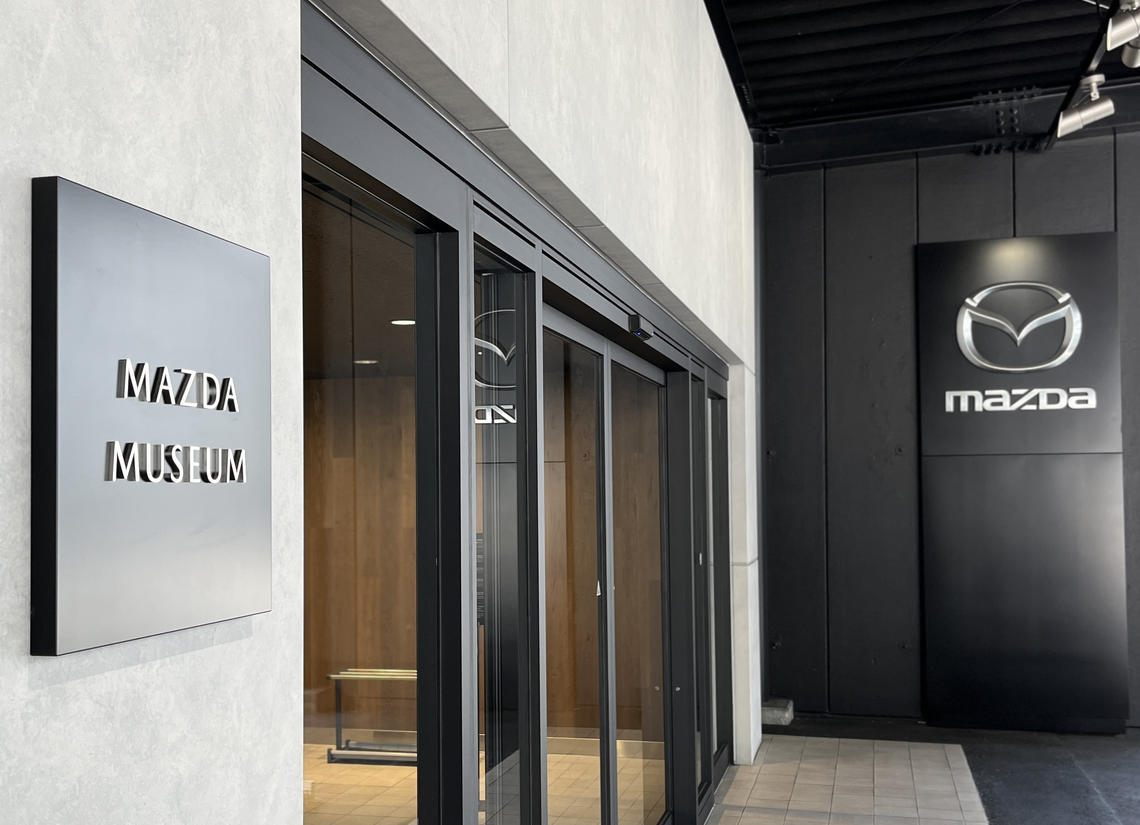
The Beginning of Mazda
In 1920, local business leaders, including Shigejiro Matsuda (hereafter referred to without honorifics), founded "Toyo Cork Industrial Co., Ltd." to rescue a struggling cork company in Hiroshima. This marked the beginning of Mazda.
The following year, Shigejiro became the second president and got production on track, but in 1925, the factory was devastated by a major fire. Having trained at a blacksmith's shop in Osaka from the age of 13 and honed his skills by working at various factories, Shigejiro, after rebuilding Toyo Cork's factory, began aiming to "contribute to society through industry." In 1927, he changed the company name from Toyo Cork Industrial Co., Ltd. to Toyo Kogyo Co., Ltd. In 1931, he built a new factory in Fuchu Village (present-day Fuchu Town), near his hometown, and entered the automotive industry with the launch of the three-wheeled truck, the "Mazda DA Type." Shigejiro saw it as his mission to provide affordable, accessible transportation to meet the demand for transport following the 1923 Great Kanto Earthquake. He deliberately chose to produce three-wheeled trucks rather than expensive four-wheeled trucks.
Later, when the Pacific War began, the factory was designated a military supplier. However, just three months after the war ended in 1945, permission was granted to resume civilian production. Production of this three-wheeled truck restarted one month after that approval. But this was Hiroshima. In August of that same year, the world's first atomic bomb was dropped here, leaving the city in a state of utter devastation. Production resumed amidst this. This "unbreakable spirit" and "relentless challenge" remain deeply rooted in Mazda today, unchanged since its founding.
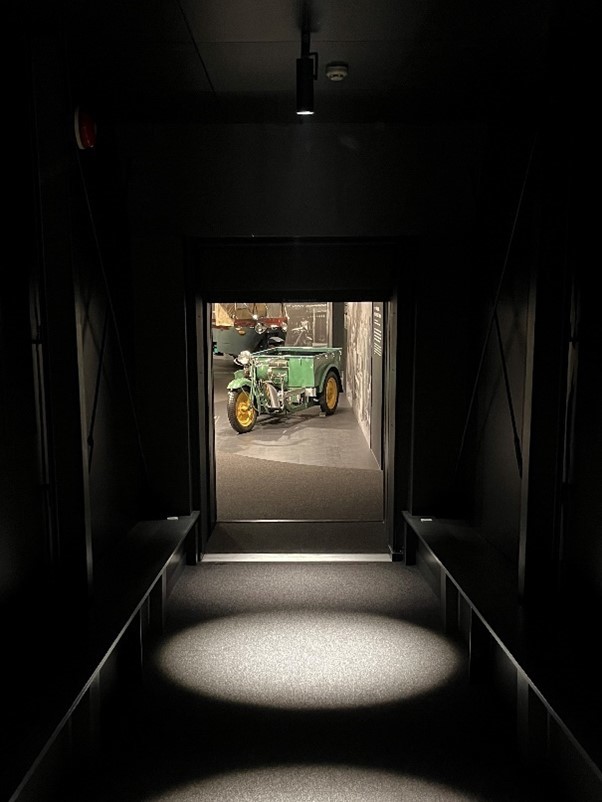
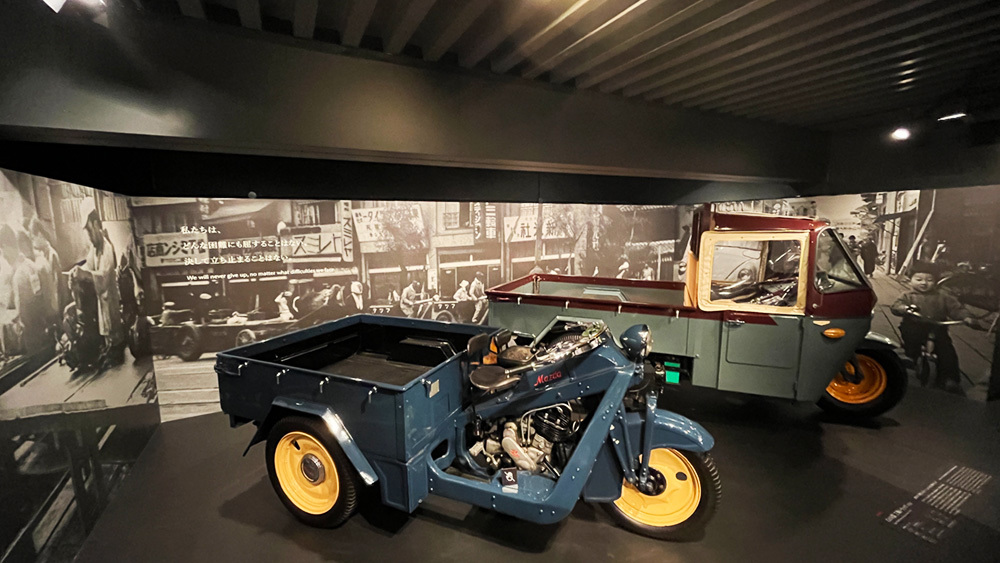
Displaying stories, not just cars
Director Hiroyuki Sukemitsu emphasizes that a major point of this museum's renewal is exhibiting the story that has continued for 100 years. He says the focus is not on conveying "Mazda's technology is amazing," but rather on making visitors feel "Mazda builds cars with this kind of passion."
The museum is divided into the following 10 ZONES, conveying Mazda's passion for manufacturing and its story through the cars it has provided and its vision for future vehicles. ZONES 1-6 represent the past, ZONES 7 and 8 the present, ZONE 9 showcases the production line, and ZONE 10 features exhibits on Mazda's vision for the next 100 years.
ZONE 1: 1920-1959 - The Origin of the Craftsmanship Spirit
ZONE 2: 1960-1969 - Advancing to a Full-Service Automaker
ZONE 3: 1970-1985 Adapting to Changing Times, Becoming an International Company
ZONE 4: MOTORSPORTS - Challenging the World for Corporate and Technological Prestige
ZONE 5: 1986-1995 - An Aggressive Expansion Strategy Aiming for Further Leaps Forward
ZONE 6 1996-2009 Prioritizing Brand Strategy for a New Growth Path
ZONE 7 : 2010-TODAY - Crafting the World's Finest Cars Through Technology and Design
ZONE8 TECHNOLOGY Mazda's Manufacturing Philosophy: Putting People First
ZONE 9: ASSEMBLY LINE: How Your Car Is Born
ZONE 10: TOWARD THE NEXT 100 YEARS: Creating Together with People
Exhibits in each ZONE are accompanied not only by captions, but also by photographs reflecting the "social climate," "words" spoken by executives and employees, and "videos" capturing the "car-making" process by staff, all arranged to match the era of the exhibits.

The exhibition scripts also incorporate narrative elements. For example, for the Eunos Roadster (a lightweight sports car launched in 1989 that sold explosively), it introduces the development leader's philosophy at the time: "A sports car isn't just about being fast. It must deliver the joy of driving and the pleasure of moving with a sense of fun."
The exhibition in ZONE 7, depicting the prologue to Mazda's "manufacturing innovation" in technology and design, also tells a story. Mazda's most recent major turning point, overcoming numerous challenges, came after the Lehman Shock. It's no exaggeration to say the brand was reborn through technology and design, championing this "manufacturing innovation."
Three Mazda vehicles, eye-catching in the brand's signature red body color, line up in ZONE 7. At the entrance to this space, a photograph of a person surrounded by numerous parts is displayed alongside the words "CREATING THE WORLD'S BEST CAR." This is Kiyoshi Fujiwara, who stepped down as Vice President in June 2022. Driven by the desire to "create anew, invent anew" and find inspiration for what the world needs today—including these three models—he deliberately dismantled a car composed of tens of thousands of parts. He sat in the center of the parts, letting his imagination run free.
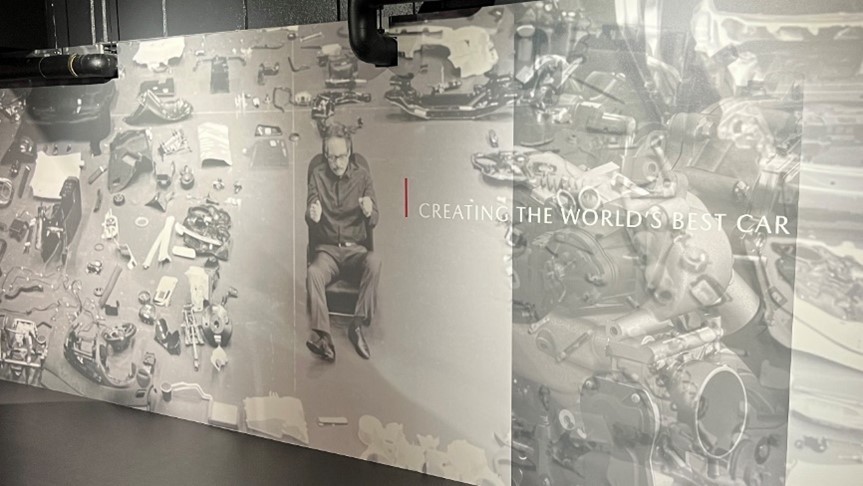
Multiple departments collaborated on the renewal design
For this renovation design showcasing such stories, the approach involved "the General Affairs Department leading project execution, departments related to each exhibit reviewing content, and the Design Division overseeing presentation methods" (exhibit content review: ZONE 1-7 by PR [Corporate History Compilation Office], ZONE 8 by Development/Production, ZONE 9 by Headquarters Factory, ZONE 10 by Design Division). Mazda uses the expression "breathing life into cars" when discussing design, and the museum's execution as a memorable experience strongly reflects this quintessential Mazda spirit.
"Symbols" of "Relentless Challenge" and the "Backstage" of Production
The spirit of "Endless Challenge" has been ingrained at Mazda since its founding. Through countless relentless challenges, the company has brought remarkable cars to the world. Here, we introduce both the "symbol" and the "behind-the-scenes" of this spirit.
First, as the "symbol," we present the "787B," which won the overall title at the 1991 Le Mans 24 Hours race. ZONE 2-6 showcases the period from Mazda's leap forward as a comprehensive automaker, through overcoming the management crisis after the bubble economy collapse, to the birth of its brand message "Zoom-Zoom" (an onomatopoeia representing the "zoom-zoom" sound of a car, symbolizing the thrill of motion felt in childhood). This ZONE also features the world's first mass-produced automotive "rotary engine," successfully developed by Mazda.
The rotary engine derives power from the rotation of its rotor. While it has the disadvantage of lower fuel efficiency compared to conventional reciprocating engines (which convert the reciprocating motion of pistons within cylinders into rotational motion), it is compact, lightweight, and delivers high output despite its small displacement. Mazda pursued relentless challenges to evolve the rotary engine, ultimately achieving the world's first overall victory at the "24 Hours of Le Mans" race with a rotary engine, and the first such victory for a Japanese manufacturer. The car body, the "787B," is displayed alongside the rotary engine it housed.
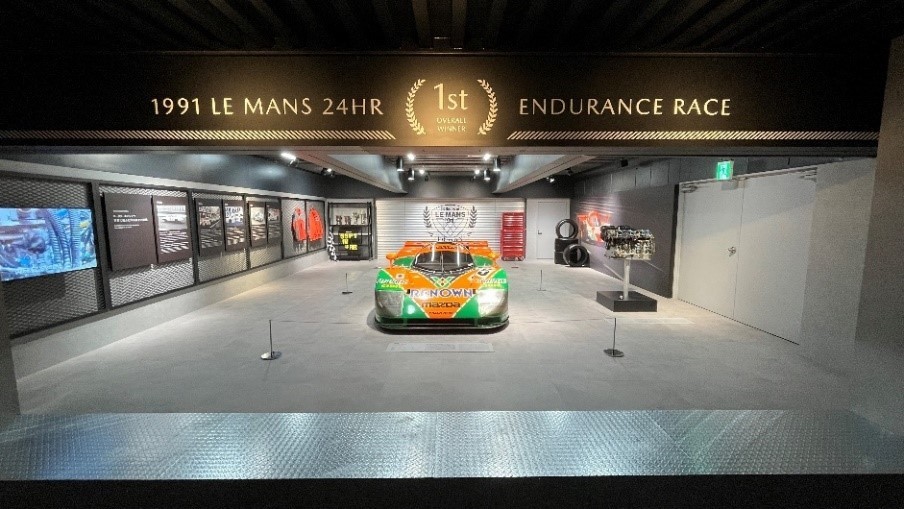
As the "behind-the-scenes" element, I'd like to highlight the zebra lights and the "Kodo Grinding Stone" displayed in ZONE 8. This section showcases a collaborative effort between the design and production departments, breaking down barriers to bring the Kodo design created by the design team to a wider audience—essentially, to enable mass production.
The production department, seeking ways to reduce the "variation" that occurs when converting designs created by the design department into mass-production molds, proposed: "How about using the zebra light, which the design department utilizes, to check whether the mass-production plywood model made by the production department matches the design intended by the design department?"
Zebra lights consist of a series of narrow, parallel light strips. The exhibition displayed both "warped plywood" and "unwarped plywood" illuminated by these lights, demonstrating how even the slightest distortion becomes immediately apparent to the naked eye. Furthermore, recognizing that designs executed with micron-level precision resonate emotionally, they created the "Kodo Grinding Stone" – a hand-polishing stone for meticulously refining mass-production molds. To achieve the ultimate "Kodo Grinding Stone," they prototyped over 12,000 versions. Next to the exhibits of the Zebra Lamp and Soul of Motion Grinding Stones, a video showing the employees meticulously polishing the designs and molds is displayed, further conveying their "passionate dedication."
※Kodo: Mazda's design theme announced in September 2010. It names the movement that stirs the soul and excites the heart "Kodo - Soul of Motion," aiming to express movement that conveys strong vitality and speed.
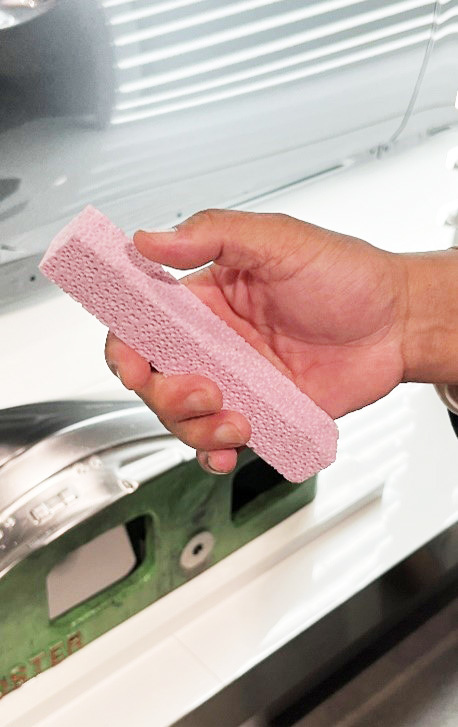
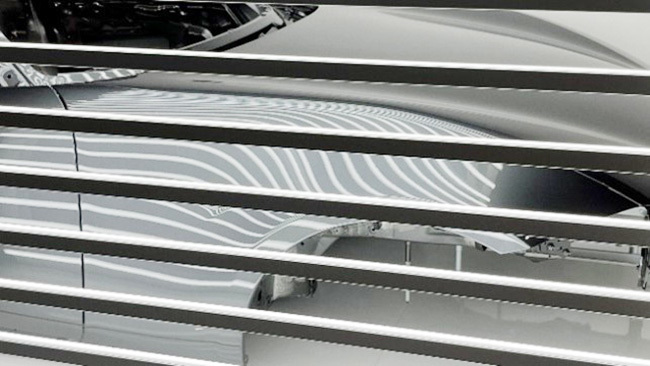
Efforts for Elementary and Junior High School Students
For Hiroshima's elementary and junior high school students, having access to a museum representing a major local Japanese company is a truly privileged environment. Before the pandemic, nearly half of the approximately 70,000 annual visitors were elementary, junior high, and high school students. Following the 100th-anniversary renovation, the museum now offers opportunities for direct interaction between employees and visitors. This includes sessions on the first Saturday of each month where employees, primarily from the development department, provide direct explanations to visitors, as well as an "engine ignition experience."
Beyond the aforementioned engine ignition experience, additional efforts have been implemented to fulfill the role of community contribution targeting elementary and junior high school students. The first is the ride experience in currently available vehicle models displayed at the entrance. Even after the pandemic began, thorough countermeasures have been maintained according to infection levels to ensure children can still ride. "It's natural for parents to say 'Don't sit in the driver's seat because it's dangerous' when it comes to cars at dealerships or home," the team explained. "But precisely because of that, we couldn't take away the thrill of riding in a vehicle at a museum where safe riding is guaranteed." This decision, made after much deliberation by the team, is characteristic of Mazda, which values "the joy of driving," "the excitement of touching something that moves," and "the thrill of operating a vehicle yourself for the first time."
The second zone explains the current process from development to production. Here, information for adults is provided on the left side of the path, while information for children is on the right. For children, panels explaining environmentally friendly car manufacturing, computer-aided design, and designer sketches illustrate the development process, displayed alongside tools used in development. As the next stop on the tour is the production line, elementary and junior high school students can proceed with an understanding of what steps are required for production and how many people are involved.
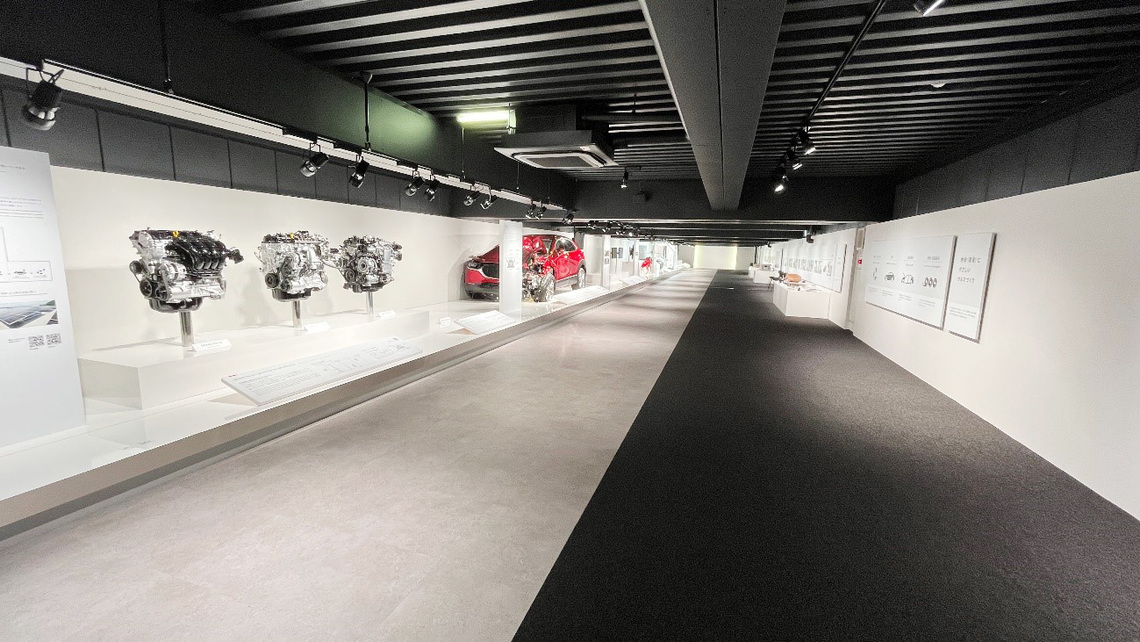
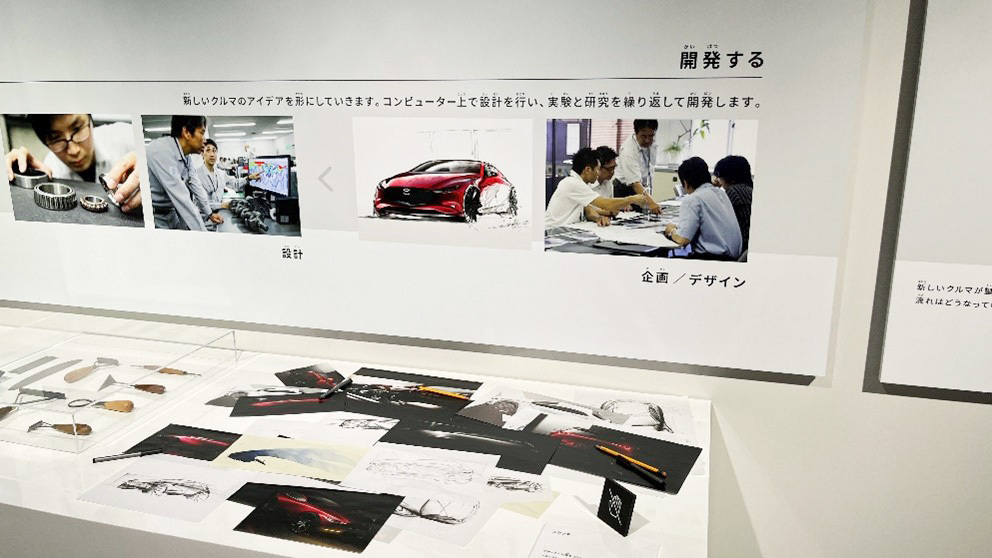
The third is the Mazda Kids Channel. This is an information site for children that clearly explains everything from development and sales to Mazda's approach to the environment. It incorporates photos, illustrations, animated videos, and employee interviews. Furthermore, coinciding with the 100th anniversary renewal, an online museum has also launched, allowing visitors to view drone footage of the museum interior on the website.
For car enthusiasts, Mazda fans, and everyone else
ZONE 9 finally brings us to the production line. As a mixed-model production line, the vehicles on the conveyor belt vary greatly. The spectacle of diverse parts being assembled one after another is truly impressive. This ZONE is undoubtedly where visitors get the most excited. Car enthusiasts and Mazda fans get excited. Indeed, many visitors are fans, with comments like: "I drove my beloved Mazda all night to get here!" "I took my driver's test in an R360 Coupe!" "I was a child actor in the first Familia commercial!" "My wife arrived at our wedding in a Luce driven by her uncle. It's a car full of memories."

However, it's not uncommon for "people who aren't car or Mazda enthusiasts" to be brought along by family or friends. In ZONE 10, non-automotive items like ceramics and sofas with refined, beautiful designs are displayed. Even these "accompanying visitors," after experiencing these exhibits and the museum's tranquil atmosphere, often comment, "The design and layout are incredibly soothing." In this way, the museum has become a place where diverse visitors can enjoy themselves.
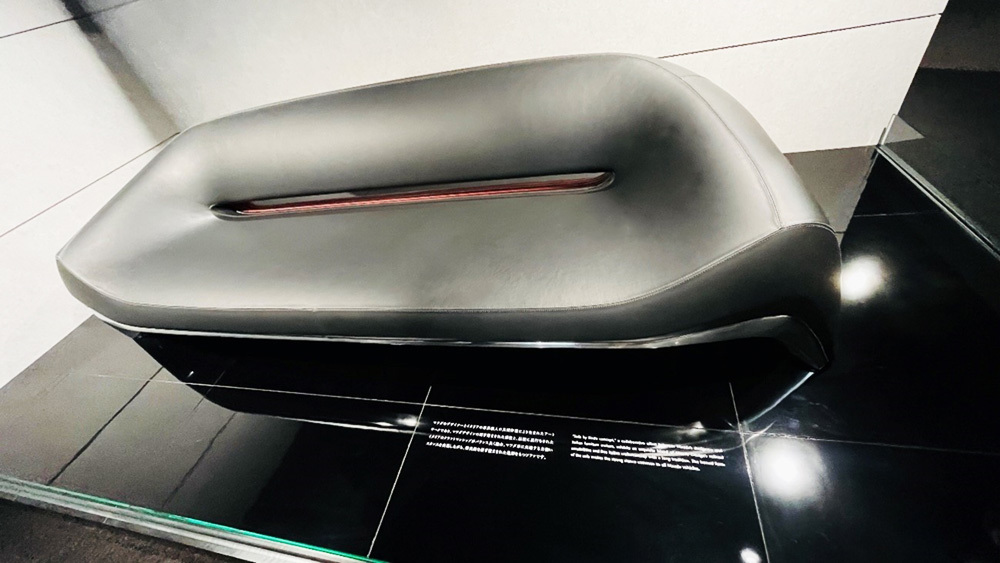
Seeing the "relentless pursuit of challenge" deepens empathy
Beyond its contributions to environmental protection and a safe, secure automotive society, Mazda actively collaborates with academia to verify whether continued driving helps maintain and improve cognitive function. This embodies the spirit of Shigejiro Matsuda's founding principle: "Contributing to society through the power of industry." Pursuing design excellence is a major part of this. Being in this museum, you can feel the desire for Mazda to inspire excitement in people, even those who don't drive or own a Mazda. You deeply understand how the people working at Mazda continue their "endless challenge," and the stories presented deepen visitors' empathy. We truly hope you experience the world of Mazda here in Hiroshima.
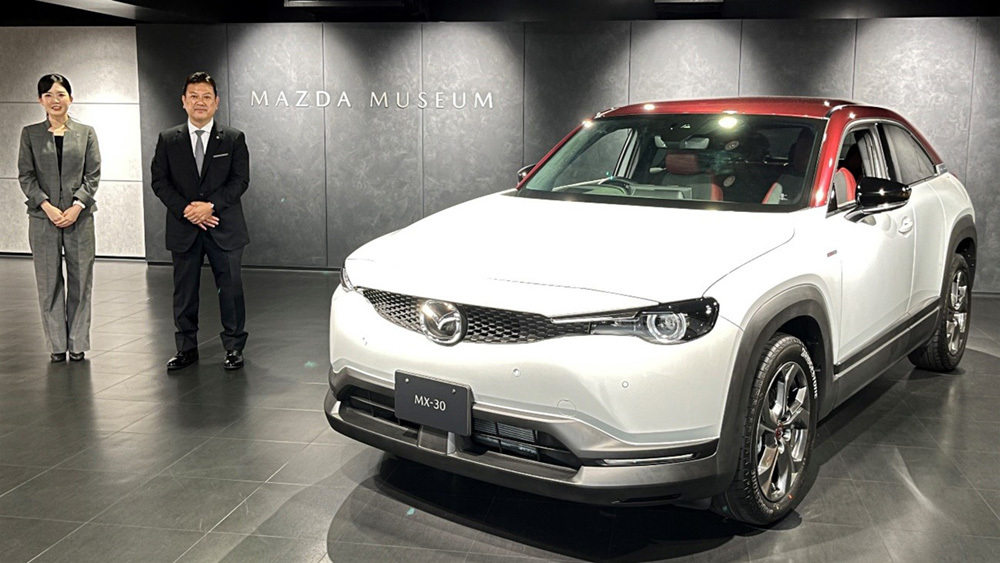
[Editor's Note] (From the Web Dentsu Inc. News Editorial Department)
Honestly, I don't understand the mechanics. But I intuitively grasp the excellence of the design. Isn't this something many people can relate to? I believe that's where Mazda's greatness lies. First, it captivates people through design. It makes you think, "Wow, I'd love to drive a car like this," or "I'd love to get behind the wheel of a car like this." Then, even if you don't understand the mechanics, you experience that this car somehow feels great to drive. A new Mazda fan is born. That's the flow.
Human actions start with intuition. "This person seems trustworthy," or "This shop looks promising." So you go in. Just as you thought, the atmosphere is wonderful. The service is attentive. You can't explain why, but the food is incredibly delicious.
Whether it's an engineer or a chef, the pride deep within their hearts is their technical skill. It's about dedicating their lives to this single screw, this knife work. But they don't flaunt it from the start. Instead, it's more about the atmosphere, the presence that says, "Come, experience a thrill unlike anything you've ever felt before." I believe that's where Mazda's commitment lies.
Was this article helpful?
Newsletter registration is here
We select and publish important news every day
For inquiries about this article
Back Numbers
Author

Maria Takechi
PR Consulting Dentsu Inc.
After completing a doctoral program in public health, joined Dentsu Inc. Public Relations (at the time). Served as account executive for clients in the healthcare sector, including healthcare companies, healthcare information providers, medical societies and industry associations, and hospitals, as well as clients in automotive, food and beverage, cosmetics, and household goods. My consulting philosophy emphasizes a balanced approach: ideas that appeal to human intuition and ethics, balanced stakeholder interests, and data-driven logical thinking. Certified PR Planner by the Japan Public Relations Association.



